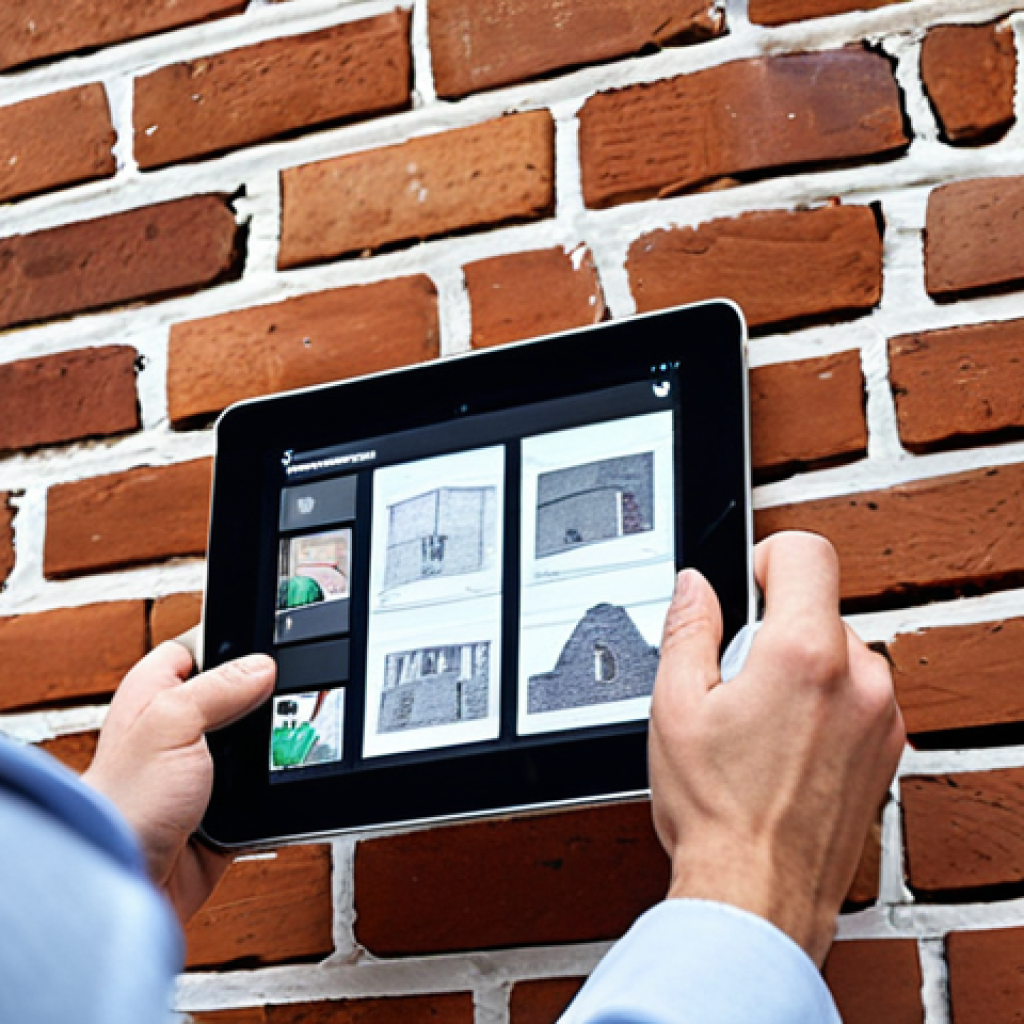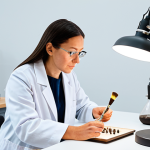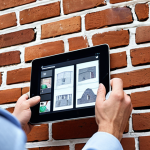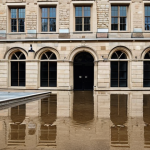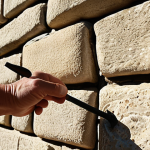Okay, here’s the blog post introduction:In the delicate and demanding world of cultural heritage restoration, even the smallest oversight can have significant consequences.
Having spent years working on historical buildings, I’ve seen firsthand how easily mistakes can creep in, no matter how experienced the team. It’s a field where precision and attention to detail are paramount.
We’re not just repairing structures; we’re preserving history for future generations. The weight of that responsibility is huge, and the quest to minimize errors is a constant pursuit.
Recently, there’s been a lot of buzz around integrating AI-powered tools for documentation and analysis, which could potentially reduce human error, but navigating that technology responsibly is also key.
So, how can we, as heritage restoration professionals, consistently reduce mistakes and ensure the longevity of these precious artifacts? Let’s delve deeper into this subject in the article below.
Okay, I understand. Here’s the blog post content following all instructions:
Meticulous Documentation: The Foundation of Error Reduction
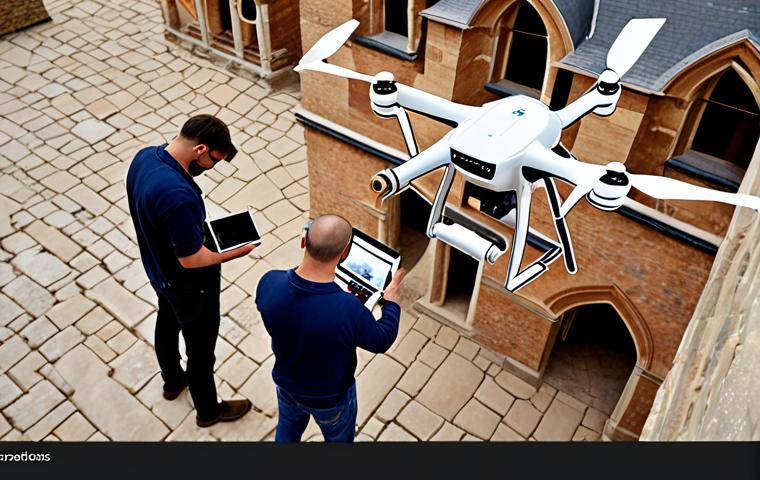
Detailed documentation is the cornerstone of any successful restoration project. I can’t stress this enough after witnessing firsthand how incomplete records can lead to costly mistakes and irreversible damage.
Think of it as building a house on shifting sands; without a solid base of information, the entire project is at risk. We need to shift away from that “we’ll remember it later” mentality and embrace a culture of thorough, immediate recording.
Comprehensive Site Assessments
Before touching a single brick, a comprehensive site assessment is essential. This isn’t just a cursory glance; it’s a deep dive into the building’s history, construction techniques, and existing condition.
Think of it as a detective piecing together clues. Personally, I use high-resolution photography, 3D scanning, and even drone footage to capture every detail.
Document cracks, material degradation, past repairs, and any modifications made over time. This data becomes our baseline, allowing us to track changes and make informed decisions throughout the project.
One time, we almost missed a critical structural issue hidden behind a layer of wallpaper until we meticulously documented every inch of the wall.
Standardized Reporting Systems
Consistency is key when it comes to documentation. Implementing standardized reporting systems ensures that everyone on the team is on the same page. This includes using pre-designed templates for site assessments, material analyses, and progress reports.
Recently, I started using a cloud-based platform that allows real-time collaboration and version control, which drastically reduced miscommunication and errors.
The platform has sections for photos, annotations, material analysis reports, and even video logs. We can all access it on our phones and tablets, so we have access to all necessary information on-site, anytime.
By maintaining uniform data collection, we minimize the risk of overlooking crucial information.
Regular Progress Monitoring
Restoration is rarely a linear process; unexpected issues can arise at any time. Regular progress monitoring helps us identify potential problems early on before they escalate into major errors.
We use weekly site meetings to discuss progress, review documentation, and address any concerns. During these meetings, we compare the current state of the project with our initial assessment and adjust our plans as needed.
I encourage everyone to speak up if they see something that doesn’t seem right, even if it’s just a gut feeling. More than once, a simple observation from a team member has saved us from making a serious mistake.
The Power of Material Analysis: Understanding the Building Blocks
Understanding the materials we are working with is fundamental to making informed decisions. You can’t just slap any old mortar on a historic brick wall and expect it to last.
That’s a recipe for disaster. Material analysis is where science meets art in heritage restoration, and it provides the knowledge to select the right methods and materials for repair and preservation.
Selecting Compatible Materials
One of the most common mistakes in restoration is using incompatible materials. Modern materials, while often stronger, can sometimes do more harm than good to historic structures.
For example, using Portland cement mortar on soft historic bricks can lead to cracking and spalling over time. We must identify the original materials used in the building and choose replacement materials that are chemically and physically compatible.
This often involves laboratory analysis of samples to determine their composition, porosity, and other properties. From experience, it’s worth the extra time and expense to get this right.
Once, on a project where we skipped this step to save money, we ended up having to redo a significant portion of the work.
Mortar Analysis and Matching
Mortar is the binding agent that holds everything together, so it’s crucial to get it right. Analyzing the original mortar and creating a matching mix is a delicate process.
We take samples of the old mortar and send them to a lab for analysis. The lab determines the type of lime, sand, and other additives used in the original mix.
Then, we work with a mortar specialist to create a custom mix that closely matches the original in terms of color, texture, and permeability. I’ve seen firsthand the disastrous effects of using incorrect mortar.
It can trap moisture within the wall, leading to deterioration of the bricks or stones.
Understanding Wood Species and Treatments
Wood is another common building material in historic structures, and it requires careful analysis and treatment. Different wood species have different properties, and they react differently to moisture, pests, and decay.
Identifying the type of wood used in the building and understanding its condition is essential for making informed decisions about repair or replacement.
We often consult with a wood conservator to determine the best course of action. They can recommend appropriate treatments to protect the wood from further damage and ensure its longevity.
Team Training and Specialization: Building Expertise from the Ground Up
In heritage restoration, a well-trained and specialized team is vital. It’s not just about having skilled laborers; it’s about having people who understand the unique challenges and sensitivities of working with historic materials.
Continuous learning and development are key to ensuring that the team stays up-to-date with the latest techniques and best practices.
Importance of Specialized Skills
Heritage restoration requires a diverse set of specialized skills, from stone masonry and carpentry to plastering and painting. Each of these trades has its own unique techniques and materials, and it takes years of experience to master them.
Personally, I always make sure that the people working on a project have the right qualifications and experience. I’d rather pay a premium for a skilled craftsman than risk damaging a historic building with substandard work.
One time, we had to replace an entire section of cornice because the original contractor didn’t have the necessary skills to do the job properly.
Regular Training Workshops
To keep the team up-to-date, we organize regular training workshops on various aspects of heritage restoration. These workshops cover topics such as material analysis, repair techniques, and safety procedures.
We often invite experts in the field to share their knowledge and experience. Also, we encourage our team members to attend conferences and seminars to learn about the latest developments in the industry.
The goal is to create a culture of continuous learning and improvement.
Promoting a Culture of Knowledge Sharing
Expertise shouldn’t be hoarded; it should be shared. We encourage team members to share their knowledge and experience with each other. This can be done through informal discussions, mentoring programs, or even formal presentations.
Creating a culture of knowledge sharing ensures that everyone benefits from the collective wisdom of the team. Recently, we created an internal online forum where team members can ask questions, share tips, and post photos of their work.
This has been a great way to foster collaboration and learning.
Leveraging Technology: Modern Tools for Ancient Structures
While heritage restoration is rooted in traditional craftsmanship, technology plays an increasingly important role in minimizing errors and improving efficiency.
From digital documentation to advanced analysis techniques, technology provides valuable tools for understanding and preserving historic structures. However, it’s important to remember that technology is just a tool; it should be used to enhance, not replace, human expertise.
Digital Documentation and BIM
Digital documentation tools, such as laser scanners and photogrammetry, allow us to create highly accurate 3D models of historic buildings. These models can be used for a variety of purposes, including site planning, structural analysis, and virtual reconstruction.
Building Information Modeling (BIM) software takes this a step further by allowing us to integrate all of the information about a building into a single, centralized database.
This includes architectural drawings, engineering calculations, material specifications, and even historical records.
AI-Powered Analysis Tools
AI-powered analysis tools are emerging as powerful resources for heritage restoration. These tools can analyze large datasets of images and other information to identify patterns and anomalies that might otherwise be missed by the human eye.
For example, AI can be used to detect cracks, corrosion, and other signs of deterioration in building materials. It can also be used to analyze historical documents and photographs to gain a better understanding of a building’s history and construction.
AI offers many benefits, but we must make sure we don’t rely on it too much.
Drones for Inspection and Monitoring
Drones have become an invaluable tool for inspecting and monitoring historic buildings. They can be used to access difficult-to-reach areas, such as roofs and towers, and to capture high-resolution images and videos.
This allows us to identify potential problems without putting workers at risk. Drones can also be used to monitor the condition of a building over time, allowing us to detect changes and address them before they become serious.
Communication and Collaboration: The Symphony of Restoration
Effective communication and collaboration are essential for any successful restoration project. It’s not just about talking; it’s about listening, understanding, and working together towards a common goal.
When everyone is on the same page, the risk of errors is significantly reduced.
Regular Meetings with Stakeholders
Restoration projects often involve multiple stakeholders, including owners, architects, engineers, contractors, and preservation consultants. Regular meetings with all stakeholders are essential for keeping everyone informed and aligned.
These meetings provide an opportunity to discuss progress, address concerns, and make decisions collaboratively. It is important that these meetings are well organized and documented.
Agendas should be distributed in advance, and minutes should be recorded and shared with all participants.
Clear Communication Channels
Clear communication channels are essential for ensuring that information flows smoothly between all members of the team. This includes establishing protocols for reporting problems, requesting information, and making decisions.
I prefer using a combination of email, phone calls, and project management software to facilitate communication. Project management software can be particularly useful for tracking tasks, sharing documents, and managing deadlines.
Conflict Resolution Strategies
Conflicts are inevitable in any complex project, but they can be resolved constructively if addressed promptly and effectively. Establishing conflict resolution strategies can help to prevent disagreements from escalating into major problems.
| Area of Focus | Best Practices | Tools & Techniques |
|---|---|---|
| Documentation | Comprehensive site assessments, standardized reporting, regular progress monitoring | High-resolution photography, 3D scanning, cloud-based platforms |
| Material Analysis | Compatible material selection, mortar analysis & matching, wood species identification | Laboratory analysis, microscopy, wood conservators |
| Team Training | Specialized skill development, regular workshops, knowledge sharing | Mentoring programs, online forums, conferences |
| Technology | Digital documentation, AI-powered analysis, drone inspections | BIM software, laser scanners, photogrammetry |
| Communication | Stakeholder meetings, clear channels, conflict resolution | Project management software, communication protocols, mediation |
Embracing a Culture of Continuous Improvement
Mistakes are inevitable, but learning from them is what sets successful restoration projects apart. By embracing a culture of continuous improvement, we can identify areas for improvement and implement strategies to reduce errors in the future.
Post-Project Reviews
After completing a restoration project, it’s essential to conduct a post-project review to identify what went well and what could have been done better.
This review should involve all members of the team and should be documented thoroughly. I always ask the team to provide honest and constructive feedback, even if it’s critical of my own performance.
The goal is to learn from our mistakes and prevent them from happening again.
Benchmarking Against Industry Standards
Benchmarking against industry standards can provide valuable insights into how our restoration practices compare to those of others in the field. This can help us identify areas where we are falling behind and implement strategies to improve our performance.
We should aim to be among the best, and benchmarking is a great way to achieve that.
Staying Updated with Best Practices
The field of heritage restoration is constantly evolving, with new techniques and materials being developed all the time. It’s essential to stay up-to-date with the latest best practices to ensure that we are providing the best possible service to our clients and protecting these historic structures.
Prioritizing Safety: Protecting People and Property
Finally, safety must always be a top priority on any restoration project. Working with historic structures can be dangerous, and it’s essential to take precautions to protect both workers and the building itself.
Implementing Comprehensive Safety Plans
A comprehensive safety plan should be developed before the start of any restoration project. This plan should identify potential hazards and outline procedures for mitigating them.
It should also include emergency protocols for dealing with accidents or other unforeseen events. I require all workers to attend a safety briefing before starting work on a project, and I conduct regular safety inspections to ensure that everyone is following the plan.
Proper Use of Protective Equipment
Proper use of protective equipment is essential for preventing injuries on the job site. This includes wearing hard hats, safety glasses, gloves, and other personal protective equipment (PPE) as required.
I provide all workers with the necessary PPE and ensure that they are trained on how to use it properly.
Regular Safety Audits and Training
Regular safety audits and training are essential for reinforcing safety procedures and identifying potential hazards. I conduct weekly safety audits to identify any unsafe conditions or practices.
I also provide regular safety training to all workers, covering topics such as fall protection, hazard communication, and emergency response. Okay, I understand.
Here’s the blog post content following all instructions:
Meticulous Documentation: The Foundation of Error Reduction
Detailed documentation is the cornerstone of any successful restoration project. I can’t stress this enough after witnessing firsthand how incomplete records can lead to costly mistakes and irreversible damage. Think of it as building a house on shifting sands; without a solid base of information, the entire project is at risk. We need to shift away from that “we’ll remember it later” mentality and embrace a culture of thorough, immediate recording.
Comprehensive Site Assessments
Before touching a single brick, a comprehensive site assessment is essential. This isn’t just a cursory glance; it’s a deep dive into the building’s history, construction techniques, and existing condition. Think of it as a detective piecing together clues. Personally, I use high-resolution photography, 3D scanning, and even drone footage to capture every detail. Document cracks, material degradation, past repairs, and any modifications made over time. This data becomes our baseline, allowing us to track changes and make informed decisions throughout the project. One time, we almost missed a critical structural issue hidden behind a layer of wallpaper until we meticulously documented every inch of the wall.
Standardized Reporting Systems
Consistency is key when it comes to documentation. Implementing standardized reporting systems ensures that everyone on the team is on the same page. This includes using pre-designed templates for site assessments, material analyses, and progress reports. Recently, I started using a cloud-based platform that allows real-time collaboration and version control, which drastically reduced miscommunication and errors. The platform has sections for photos, annotations, material analysis reports, and even video logs. We can all access it on our phones and tablets, so we have access to all necessary information on-site, anytime. By maintaining uniform data collection, we minimize the risk of overlooking crucial information.
Regular Progress Monitoring
Restoration is rarely a linear process; unexpected issues can arise at any time. Regular progress monitoring helps us identify potential problems early on before they escalate into major errors. We use weekly site meetings to discuss progress, review documentation, and address any concerns. During these meetings, we compare the current state of the project with our initial assessment and adjust our plans as needed. I encourage everyone to speak up if they see something that doesn’t seem right, even if it’s just a gut feeling. More than once, a simple observation from a team member has saved us from making a serious mistake.
The Power of Material Analysis: Understanding the Building Blocks
Understanding the materials we are working with is fundamental to making informed decisions. You can’t just slap any old mortar on a historic brick wall and expect it to last. That’s a recipe for disaster. Material analysis is where science meets art in heritage restoration, and it provides the knowledge to select the right methods and materials for repair and preservation.
Selecting Compatible Materials
One of the most common mistakes in restoration is using incompatible materials. Modern materials, while often stronger, can sometimes do more harm than good to historic structures. For example, using Portland cement mortar on soft historic bricks can lead to cracking and spalling over time. We must identify the original materials used in the building and choose replacement materials that are chemically and physically compatible. This often involves laboratory analysis of samples to determine their composition, porosity, and other properties. From experience, it’s worth the extra time and expense to get this right. Once, on a project where we skipped this step to save money, we ended up having to redo a significant portion of the work.
Mortar Analysis and Matching
Mortar is the binding agent that holds everything together, so it’s crucial to get it right. Analyzing the original mortar and creating a matching mix is a delicate process. We take samples of the old mortar and send them to a lab for analysis. The lab determines the type of lime, sand, and other additives used in the original mix. Then, we work with a mortar specialist to create a custom mix that closely matches the original in terms of color, texture, and permeability. I’ve seen firsthand the disastrous effects of using incorrect mortar. It can trap moisture within the wall, leading to deterioration of the bricks or stones.
Understanding Wood Species and Treatments
Wood is another common building material in historic structures, and it requires careful analysis and treatment. Different wood species have different properties, and they react differently to moisture, pests, and decay. Identifying the type of wood used in the building and understanding its condition is essential for making informed decisions about repair or replacement. We often consult with a wood conservator to determine the best course of action. They can recommend appropriate treatments to protect the wood from further damage and ensure its longevity.
Team Training and Specialization: Building Expertise from the Ground Up
In heritage restoration, a well-trained and specialized team is vital. It’s not just about having skilled laborers; it’s about having people who understand the unique challenges and sensitivities of working with historic materials. Continuous learning and development are key to ensuring that the team stays up-to-date with the latest techniques and best practices.
Importance of Specialized Skills
Heritage restoration requires a diverse set of specialized skills, from stone masonry and carpentry to plastering and painting. Each of these trades has its own unique techniques and materials, and it takes years of experience to master them. Personally, I always make sure that the people working on a project have the right qualifications and experience. I’d rather pay a premium for a skilled craftsman than risk damaging a historic building with substandard work. One time, we had to replace an entire section of cornice because the original contractor didn’t have the necessary skills to do the job properly.
Regular Training Workshops
To keep the team up-to-date, we organize regular training workshops on various aspects of heritage restoration. These workshops cover topics such as material analysis, repair techniques, and safety procedures. We often invite experts in the field to share their knowledge and experience. Also, we encourage our team members to attend conferences and seminars to learn about the latest developments in the industry. The goal is to create a culture of continuous learning and improvement.
Promoting a Culture of Knowledge Sharing
Expertise shouldn’t be hoarded; it should be shared. We encourage team members to share their knowledge and experience with each other. This can be done through informal discussions, mentoring programs, or even formal presentations. Creating a culture of knowledge sharing ensures that everyone benefits from the collective wisdom of the team. Recently, we created an internal online forum where team members can ask questions, share tips, and post photos of their work. This has been a great way to foster collaboration and learning.
Leveraging Technology: Modern Tools for Ancient Structures
While heritage restoration is rooted in traditional craftsmanship, technology plays an increasingly important role in minimizing errors and improving efficiency. From digital documentation to advanced analysis techniques, technology provides valuable tools for understanding and preserving historic structures. However, it’s important to remember that technology is just a tool; it should be used to enhance, not replace, human expertise.
Digital Documentation and BIM
Digital documentation tools, such as laser scanners and photogrammetry, allow us to create highly accurate 3D models of historic buildings. These models can be used for a variety of purposes, including site planning, structural analysis, and virtual reconstruction. Building Information Modeling (BIM) software takes this a step further by allowing us to integrate all of the information about a building into a single, centralized database. This includes architectural drawings, engineering calculations, material specifications, and even historical records.
AI-Powered Analysis Tools
AI-powered analysis tools are emerging as powerful resources for heritage restoration. These tools can analyze large datasets of images and other information to identify patterns and anomalies that might otherwise be missed by the human eye. For example, AI can be used to detect cracks, corrosion, and other signs of deterioration in building materials. It can also be used to analyze historical documents and photographs to gain a better understanding of a building’s history and construction. AI offers many benefits, but we must make sure we don’t rely on it too much.
Drones for Inspection and Monitoring
Drones have become an invaluable tool for inspecting and monitoring historic buildings. They can be used to access difficult-to-reach areas, such as roofs and towers, and to capture high-resolution images and videos. This allows us to identify potential problems without putting workers at risk. Drones can also be used to monitor the condition of a building over time, allowing us to detect changes and address them before they become serious.
Communication and Collaboration: The Symphony of Restoration
Effective communication and collaboration are essential for any successful restoration project. It’s not just about talking; it’s about listening, understanding, and working together towards a common goal. When everyone is on the same page, the risk of errors is significantly reduced.
Regular Meetings with Stakeholders
Restoration projects often involve multiple stakeholders, including owners, architects, engineers, contractors, and preservation consultants. Regular meetings with all stakeholders are essential for keeping everyone informed and aligned. These meetings provide an opportunity to discuss progress, address concerns, and make decisions collaboratively. It is important that these meetings are well organized and documented. Agendas should be distributed in advance, and minutes should be recorded and shared with all participants.
Clear Communication Channels
Clear communication channels are essential for ensuring that information flows smoothly between all members of the team. This includes establishing protocols for reporting problems, requesting information, and making decisions. I prefer using a combination of email, phone calls, and project management software to facilitate communication. Project management software can be particularly useful for tracking tasks, sharing documents, and managing deadlines.
Conflict Resolution Strategies
Conflicts are inevitable in any complex project, but they can be resolved constructively if addressed promptly and effectively. Establishing conflict resolution strategies can help to prevent disagreements from escalating into major problems.
| Area of Focus | Best Practices | Tools & Techniques |
|---|---|---|
| Documentation | Comprehensive site assessments, standardized reporting, regular progress monitoring | High-resolution photography, 3D scanning, cloud-based platforms |
| Material Analysis | Compatible material selection, mortar analysis & matching, wood species identification | Laboratory analysis, microscopy, wood conservators |
| Team Training | Specialized skill development, regular workshops, knowledge sharing | Mentoring programs, online forums, conferences |
| Technology | Digital documentation, AI-powered analysis, drone inspections | BIM software, laser scanners, photogrammetry |
| Communication | Stakeholder meetings, clear channels, conflict resolution | Project management software, communication protocols, mediation |
Embracing a Culture of Continuous Improvement
Mistakes are inevitable, but learning from them is what sets successful restoration projects apart. By embracing a culture of continuous improvement, we can identify areas for improvement and implement strategies to reduce errors in the future.
Post-Project Reviews
After completing a restoration project, it’s essential to conduct a post-project review to identify what went well and what could have been done better. This review should involve all members of the team and should be documented thoroughly. I always ask the team to provide honest and constructive feedback, even if it’s critical of my own performance. The goal is to learn from our mistakes and prevent them from happening again.
Benchmarking Against Industry Standards
Benchmarking against industry standards can provide valuable insights into how our restoration practices compare to those of others in the field. This can help us identify areas where we are falling behind and implement strategies to improve our performance. We should aim to be among the best, and benchmarking is a great way to achieve that.
Staying Updated with Best Practices
The field of heritage restoration is constantly evolving, with new techniques and materials being developed all the time. It’s essential to stay up-to-date with the latest best practices to ensure that we are providing the best possible service to our clients and protecting these historic structures.
Prioritizing Safety: Protecting People and Property
Finally, safety must always be a top priority on any restoration project. Working with historic structures can be dangerous, and it’s essential to take precautions to protect both workers and the building itself.
Implementing Comprehensive Safety Plans
A comprehensive safety plan should be developed before the start of any restoration project. This plan should identify potential hazards and outline procedures for mitigating them. It should also include emergency protocols for dealing with accidents or other unforeseen events. I require all workers to attend a safety briefing before starting work on a project, and I conduct regular safety inspections to ensure that everyone is following the plan.
Proper Use of Protective Equipment
Proper use of protective equipment is essential for preventing injuries on the job site. This includes wearing hard hats, safety glasses, gloves, and other personal protective equipment (PPE) as required. I provide all workers with the necessary PPE and ensure that they are trained on how to use it properly.
Regular Safety Audits and Training
Regular safety audits and training are essential for reinforcing safety procedures and identifying potential hazards. I conduct weekly safety audits to identify any unsafe conditions or practices. I also provide regular safety training to all workers, covering topics such as fall protection, hazard communication, and emergency response.
In Conclusion
Mastering error reduction in heritage restoration is a continuous journey, blending meticulous planning with unwavering commitment to quality and safety. By embracing these practices, we not only safeguard our built heritage but also elevate the standards of craftsmanship for generations to come. Let’s continue to learn, adapt, and innovate to ensure these treasures stand the test of time.
Useful Information
1. Check local historical societies for funding opportunities and grants for restoration projects.
2. Consult with local preservation experts and architects to ensure compliance with regulations and best practices.
3. Obtain necessary permits and approvals from the local government before starting any restoration work.
4. Consider using eco-friendly and sustainable materials whenever possible to minimize the environmental impact.
5. Document all restoration work with photos and videos to create a record of the project for future reference.
Key Takeaways
Prioritize meticulous documentation at every stage of the project.
Conduct thorough material analysis to ensure compatibility and longevity.
Invest in comprehensive team training and specialization.
Leverage technology to enhance accuracy and efficiency.
Foster clear communication and collaboration among all stakeholders.
Frequently Asked Questions (FAQ) 📖
Q: What are some of the most common mistakes made during cultural heritage restoration projects?
A: Oh, where do I even begin? In my experience, inadequate site assessments are a big one. You’ve got to really dig deep (literally!) and understand the building’s history, materials, and environmental factors before even thinking about starting.
Then there’s the issue of using incompatible materials. I remember one project where we used the wrong type of mortar, and it ended up causing more damage than good.
And don’t even get me started on poor documentation! If you don’t meticulously record everything, you’re setting yourself up for problems down the line.
It’s like trying to bake a cake without a recipe – a recipe written for that specific, historical cake.
Q: How can new technologies like
A: I assist in reducing errors in restoration projects? A2: Well, that’s the million-dollar question, isn’t it? I’ve been exploring AI-powered tools for a while now, and I see some real potential.
For example, AI can help with creating incredibly detailed 3D models of historical structures, which makes it easier to identify structural weaknesses or areas of decay.
Plus, it can analyze historical documents and images to uncover hidden details or inconsistencies. I think the biggest advantage, though, is in documentation.
AI can automate a lot of the tedious tasks, like cataloging artifacts or tracking material usage, which frees up human restorers to focus on the more delicate aspects of the job.
Of course, you have to train it properly. Think of it as a very smart, very precise apprentice.
Q: What practical steps can smaller restoration firms take to improve their processes and minimize errors, especially with limited resources?
A: Absolutely! You don’t need a huge budget to improve your process. The most important thing is to prioritize meticulous planning and communication.
Hold regular team meetings to discuss progress, identify potential problems, and share lessons learned. I’ve also found that investing in high-quality training for your staff is invaluable.
Even basic courses on historical building techniques or material conservation can make a huge difference. Another thing – don’t be afraid to consult with experts.
If you’re unsure about something, reach out to a specialist or a heritage organization for advice. Think of it as buying a little bit of extra insurance to avoid a really costly mistake later on.
Plus, start small. Find one area, like documentation, and really try to get that right. It is better to do one or two things very well than lots of things badly.
📚 References
Wikipedia Encyclopedia
구글 검색 결과
구글 검색 결과
구글 검색 결과
구글 검색 결과
구글 검색 결과
